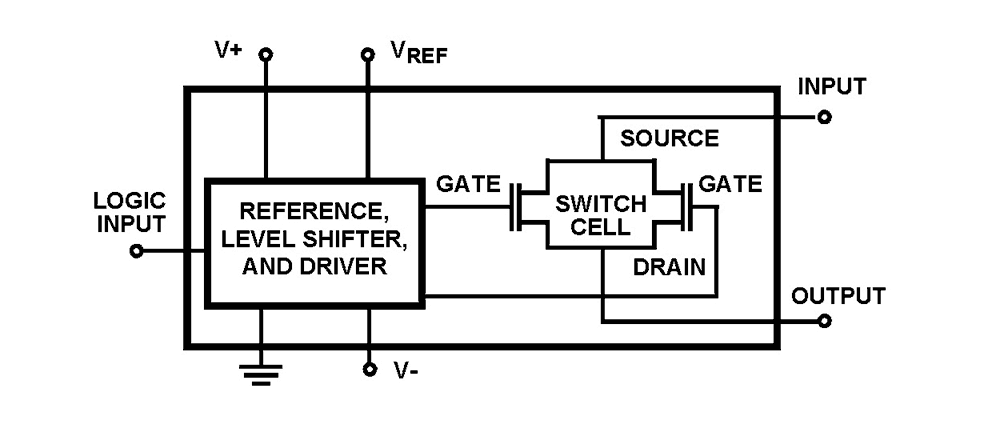Overview
Description
HI-200/HI-201 (dual/quad) are monolithic devices comprising independently selectable SPST switches which feature fast switching speeds (HI-200 240ns, and HI-201 185ns) combined with low power dissipation (15mW at 25°C). Each switch provides low ON resistance operation for input signal voltage up to the supply rails and for signal current up to 80mA. Rugged DI construction eliminates latch-up and substrate SCR failure modes. All devices provide break-before-make switching and are TTL and CMOS compatible for maximum application versatility. HI-200/HI-201 are ideal components for use in high frequency analog switching. Typical applications include signal path switching, sample and hold circuit, digital filters, and operational amplifier gain switching networks.
Features
- Pb-Free Available (RoHS Compliant)
- Analog Voltage Range ±15V
- Analog Current Range 80mA
- Turn-On Time 240ns
- Low rON 55Ω
- Low Power Dissipation 15mW
- TTL/CMOS Compatible
Comparison
Applications
Design & Development
Models
ECAD Models
Schematic symbols, PCB footprints, and 3D CAD models from SamacSys can be found by clicking on the CAD Model links in the Product Options table. If a symbol or model isn't available, it can be requested directly from SamacSys.

Support

Support Communities
Support Communities
-
HI1-201HS-2和HI1-201HS-5的尾缀分别表示什么意思?和尾缀883是同一个料吗?
HI1-201HS-2和HI1-201HS-5的尾缀分别表示什么意思?和尾缀883是同一个料吗?
Jul 29, 2025
FAQs
-
Can I use HI-201 with a single power supply?
Question: The datasheet states "The HI-200/201 does not provide the necessary internal switching threshold in a single supply system." What will be the threshold in a single supply situation? Can the threshold change during operation or between power-ups? What are the major concerns with using a ...
Jan 1, 1970 -
Can you tell me how you perform your leakage testing on the HI-201 switches?
Question: Can you tell me how you perform your leakage testing on the HI-201 switches? Answer: Application note AN557 details the testing procedures on several of our switch families.
Jan 1, 1970


